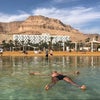Holyrood Abbey is a ruined Augustinian abbey in Edinburgh, Scotland. The abbey (which is sited in the grounds of the Palace of Holyroodhouse, which it predates) was built in 1128 at the order of King David I of Scotland.
Rood is an old word for a cross, usually meaning the cross which Jesus Christ was crucified upon; thus the name Holyrood is equivalent to "Holy Cross." The name is more commonly pronounced as Holly-rood as well as the less commonly used Holy-rood.
Legend relates that in 1127, while King David I was hunting in the forests to the east of Edinburgh during the Feast of the Cross, he was thrown from his horse after it had been startled by a hart. According to variations of the story, the king was saved from being gored by the charging animal due to it by being startled either by the miraculous appearance of a holy cross descending from the skies, or from the sunlight reflected from a crucifix which suddenly appeared set between the hart's antlers while the king attempted to grasp them in self-defence. As an act of thanksgiving for his escape, David I founded Holyrood Abbey on the site. The abbey was originally served by a community of Augustinian canons from Merton Priory. ]]
The original abbey church of Holyrood was largely reconstructed from the late 12th to 13th centuries. The completed building consisted of a six-bay aisled choir, three-bay transepts with a central tower above, and an eight-bay aisled nave with twin towers at it's west front.
The Parliament of Scotland met at the abbey in 1256, 1285, 1327, 1366, 1384, 1389 and 1410, and the Treaty of Edinburgh–Northampton, which brought and end to the First War of Scottish Independence, was signed by Robert I in the ‘King’s Chamber’ at Holyrood in March 1328. The abbeys position close to Edinburgh Castle meant that it was regularly visited by Scotland's kings, who were lodged in the guesthouse situated to the west of the abbey cloister. In the mid-15th century, with the emergence of Edinburgh as the main seat of the royal court and the chief city in the kingdom, the Kings of Scots used the accommodation at Holyrood increasingly as a purely secular residence. James II and his twin brother, Alexander, Duke of Rothesay, were born there in October 1430. James was also crowned at Holyrood in 1437 and building works were carried out before his marriage there in 1449. Between 1498 and 1501, James IV constructed a royal palace at Holyrood, adjacent to the abbey cloister. Royal influence over the abbey further increased when in 1538 Robert Stewart, the infant, illegitimate son of James V, was appointed as commendator of Holyrood.
During the War of the Rough Wooing, the invading English armies of the Earl of Hertford inflicted structural damage on Holyrood Abbey in 1544 and 1547. Lead was stripped from the roof, the bells were removed, and the contents of the abbey were plundered. In 1559, during the Scottish Reformation, the abbey suffered further damage when a mob destroyed the altars and looted the rest of the church. With the reformation and the end of monastic services, the east end of the abbey church became redundant. In 1569, Adam Bothwell, the commendator of Holyrood, informed the General Assembly of the Church of Scotland that the east end was in such a state of disrepair that the choir and transept should be demolished, retaining only the nave, which was to become the parish church of the burgh of Canongate. Between 1570 and 1573 an east gable was erected, closing the east end of the former nave, all but two of the windows in the nave were blocked up, the royal tombs were removed to a new royal burial vault in the south aisle and the old east end was demolished. The abbey was extensively remodelled in 1633 for the coronation of Charles I.
In 1686, James VII established a Jesuit college at Holyrood. The following year, the Protestant congregation was moved to the new Kirk of the Canongate, and the abbey was converted into a Roman Catholic Chapel Royal and the chapel of the Order of the Thistle. The abbey church was remodelled according to the plans of James Smith, and was fitted with elaborate thrones and stalls for the individual Knights of the Thistle, carved by Grinling Gibbons. However, in 1688, following the Glorious Revolution, the Edinburgh mob broke into the abbey, destroyed the Chapel Royal and desecrated the royal tombs. The roof was vaulted in stone in 1758, but the work was badly executed, and during a storm in 1768 the roof collapsed, leaving the abbey as it currently stands, a roofless ruin. The restoration of the abbey has been proposed on a number of occasions since the 18th century - in 1835 by the architect James Gillespie Graham as a meeting place for the General Assembly of the Church of Scotland and, in 1906, as a chapel for the Knights of the Thistle — but both proposals were rejected.
Holyrood Abbey was the site of the coronations of James II in 1437 and Charles I in 1633. Queen consorts who were crowned at Holyood include:
The abbey was the site of numerous royal weddings. These include:
The abbey was the site of many royal funerals and interments. Royals interred here include:
There is still a Church of Scotland congregation named Holyrood Abbey, however this congregation uses a late-Victorian church building in Dalziel Place at the junction of Marionville Road and London Road, some distance from the old Holyrood Abbey. The church building was opened in December 1900 as Abbeyhill United Free Church.
Following the Disruption of 1843 in the Church of Scotland, part of the congregation of the Kirk of the Canongate left to form Holyrood Free Church. A new building was constructed in front of the Palace of Holyroodhouse. This congregation united with Abbeyhill United Free Church in 1915, henceforth using the Dalziel Place church buildings. The United Free Church of Scotland united with the Church of Scotland in 1929, the congregation henceforth being known as Holyrood Abbey Church. The building was extensively upgraded in 2006-2007. The former Holyrood United Free Church building adjacent to the Palace was used for many years as a storeroom, but in 2003 was extensively renovated and reopened as "The Queen's Gallery" for art exhibitions from the Royal Collection.





